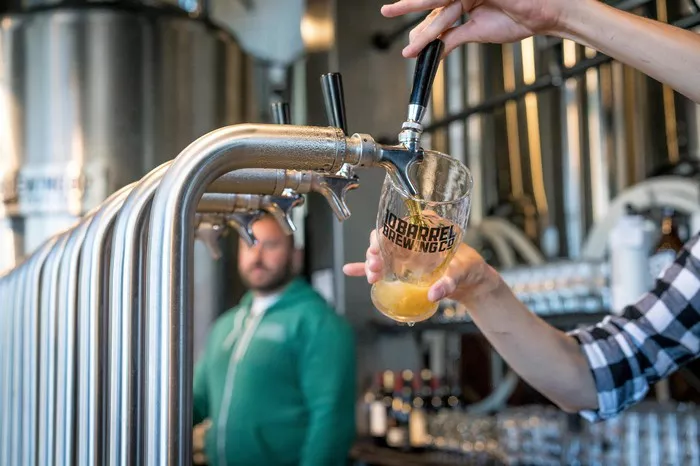Viking beer, a beverage deeply intertwined with Norse history and culture, holds a mystique that has fascinated historians, archaeologists, and modern craft brewers alike. In this article, we will delve into the origins of Viking beer, exploring the ingredients, brewing techniques, and cultural significance of this ancient Nordic libation. From the use of indigenous grains to the rituals surrounding its consumption, Viking beer offers a glimpse into the brewing traditions of the Norse people.
The Ingredients of Viking Beer
Viking beer, like many ancient brews, was crafted from locally sourced ingredients, reflecting the availability of resources in the harsh and unforgiving landscapes of Scandinavia. The key components of Viking beer included:
Barley: Barley was the primary grain used in Viking beer production. It was cultivated by Norse farmers and provided the essential fermentable sugars required for brewing.
Wheat: While barley was the main grain, wheat was occasionally used to add variety and texture to Viking beer. Wheat-based beers were likely considered a luxury due to the additional effort required to cultivate and process wheat.
Oats: Oats, another locally grown grain, were utilized in some Viking beer recipes, contributing to the beer’s body and mouthfeel. Oat-based beers were likely hearty and satisfying.
Malt: Barley and other grains were malted by soaking, germinating, and drying. Malted grains provided the necessary enzymes for the conversion of starches into fermentable sugars during mashing.
Water: Access to fresh water sources was crucial for brewing Viking beer. Clean water ensured that the beer was safe to drink and free from contaminants.
Herbs and Spices: Viking beer was often flavored with a variety of herbs and spices, such as juniper, bog myrtle, and yarrow. These botanicals added complexity and depth to the beer’s flavor profile.
Wild Yeast: Viking beer relied on wild yeast strains for fermentation. These yeast strains were naturally present in the environment and played a crucial role in the fermentation process.
Brewing Techniques of Viking Beer
Brewing Viking beer was a complex and labor-intensive process that required skill and dedication. The brewing techniques employed by the Norse people were distinct and reflected their environment and culture. Here’s an overview of the brewing process:
Mashing: The malted grains, typically barley, were crushed and mixed with hot water to create a mash. The heat activated the enzymes in the malt, converting starches into sugars. This sugary liquid, known as wort, was extracted from the mash.
Boiling: The wort was then boiled, and herbs and spices were added to flavor the beer. The boiling process served to sterilize the wort, making it safe to consume.
Cooling: After boiling, the hot wort needed to be cooled rapidly to a temperature suitable for fermentation. Vikings would have used various methods, such as transferring the wort to wooden vessels and exposing it to the cold Nordic air.
Fermentation: Once cooled, the wort was transferred to fermentation vessels, typically wooden casks or barrels. Wild yeast from the environment, as well as residual yeast from previous batches, initiated fermentation. This process could take several days or even weeks.
Aging: After fermentation, Viking beer was often aged in wooden containers. This aging process allowed flavors to mellow and develop complexity.
Filtering: Before consumption, Viking beer would have been filtered to remove any sediment or solid particles, resulting in a clear and drinkable brew.
Cultural Significance of Viking Beer
Viking beer was not merely a beverage but a central aspect of Norse culture and society. It held significance in various aspects of Viking life:
Feasting and Celebrations: Viking beer was an integral part of feasts and celebrations, which were essential communal events in Norse culture. These gatherings often included drinking, storytelling, and socializing.
Religious Rituals: Beer played a role in some Viking religious rituals and ceremonies. Offerings of beer to the gods were made in hopes of favorable outcomes in battles, harvests, and other aspects of life.
Trade and Exchange: Beer was a valuable commodity in Viking society and was traded extensively. It was often used as a form of currency or as part of trade agreements.
Social Bonding: Sharing a drink of Viking beer was a means of forging bonds and alliances among individuals and clans. The act of toasting and drinking together symbolized trust and camaraderie.
Nourishment: In addition to its social and cultural significance, Viking beer also provided a significant source of nutrition for the Norse people. It was a calorie-rich beverage that offered sustenance, especially during harsh winters.
Conclusion: A Toast to Viking Beer
Viking beer, with its rich history, distinctive ingredients, and cultural significance, continues to captivate the imagination of historians, archaeologists, and beer enthusiasts. It serves as a reminder of the deep connection between brewing traditions and the societies that crafted them.


